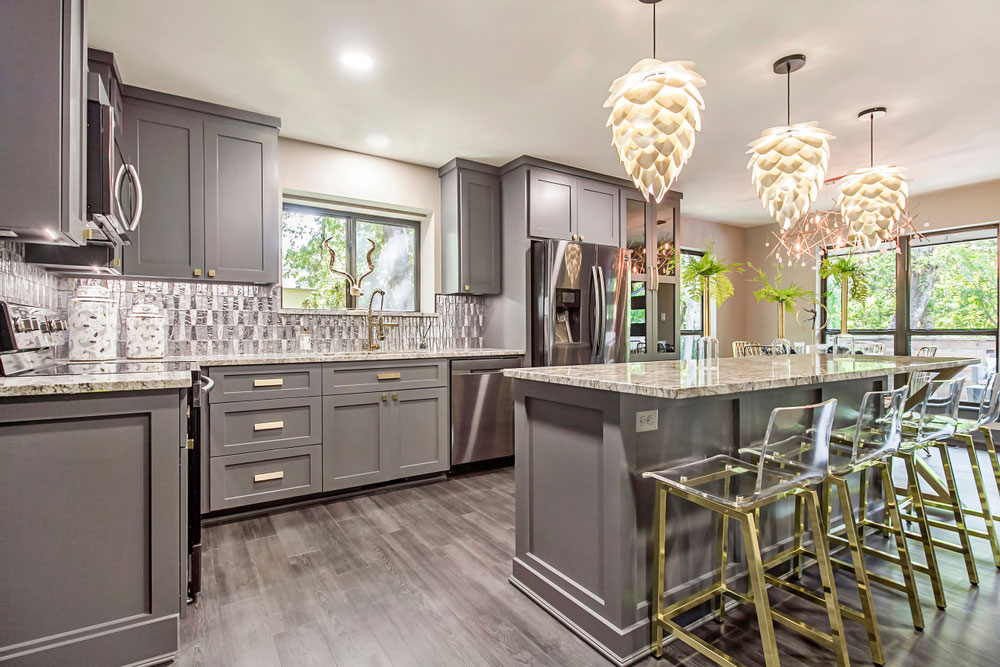
Nothing can transform a kitchen more than newly painted cabinets. And, on the surface, it seems like it’s a quick and easy, budget-friendly task. Sadly, in reality, painting your kitchen cabinets is a time-consuming project with many potential pitfalls.
Don’t run blindly into this DIY project. You need to do your homework to get the professional finish you are looking for. Outlined below are seven common mistakes that can be made while attempting an assignment of this magnitude.
1. Unachievable expectations
Wanting to paint open grain cabinet doors and drawers will not give you the best look. No matter what sort of paint you use, the grooves in the wood will be accentuated by the paint. Filling those grooves would be a mammoth task. You may be best replacing the doors and drawers.
2. Not sanding your cabinets
Your cabinets look in pretty good nick therefore you can skip the sanding process, right? Wrong! It does not matter how good the cabinets look. You need to sand the surface otherwise the paint simply will not stick. Use medium grip sandpaper to start with and finish up with fine.
3. Not removing every speck of dust
Use the vacuum cleaner with a soft brush over the cabinets and finish up wiping with a soft dampened cloth or a microfiber duster. Any tiny specks of dust left behind will be magnified once you start to apply any paint, so be extra diligent in removing every minuscule speck of dust.
4. Not using a primer
As appealing as it might be to skip this step, experts say you need to use a primer even if the surface has been previously painted as it improves the longevity and finish of the cabinets. Ensure you lightly sand the surface after the primer is dry.
5. Oh no! The wrong colour
Starting the whole process again for most of us is not an option, so we need to get the colour right in the beginning. Search online for colour inspiration then test out a sample pot on a poster/plank of wood and put it next to your backsplash and benchtop. You will soon know whether that is the colour for you.
6. Using the wrong type of paint
Paint which is not specially designed for kitchen cabinets will never give you that professional wow factor. Dulux Paints has a new Renovation Range especially for kitchen cabinets, which can be used on laminate, melamine and wooden doors. There are other brands on the market so do check with your painting specialist to find the appropriate paint for your cabinets.
7. Not changing your handles
When your cabinet doors and drawers are looking sensational, it’s important to introduce that final bit of flair into your kitchen with a set of new knobs and pulls, at a budget to suit you. Don’t forget to fill the holes left by the old handles before you paint.
If you are feeling a little overwhelmed with committing yourself to this project, get a quote from a professional you might be surprised how cost-effective it is to get an expert to do the job. Definitely less stress and you are guaranteed a brilliant result.
